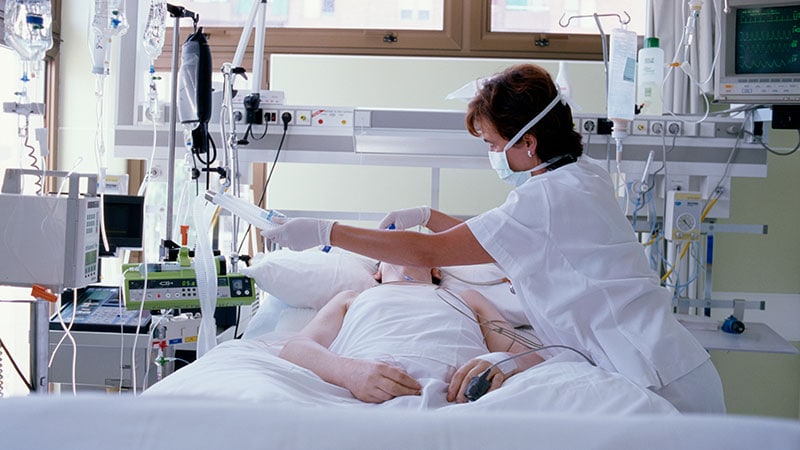Chart Flag Boosts BP Control in Kidney Patients
The addition of a clinical decision support tool improved the systolic blood pressure (SBP) among patients with chronic kidney disease and uncontrolled hypertension, according to a new study published in JAMA Internal Medicine on March 11, 2024.
Primary care clinicians who used a clinician decision support tool when treating patients with chronic kidney failure prescribed blood pressure medication and ordered basic metabolic labs more often than physicians who didn't use the tool, according to a new study published in JAMA Internal Medicine.
Hypertension is the leading cause of modifiable death and affects most patients with chronic kidney disease. Although high blood pressure can be treated with medication and lifestyle changes, research has shown some clinicians do not follow screening guidelines, while others may provide suboptimal treatment.
"Many primary care physicians don't have hypertension on the top of their list despite it being a key risk factor for adverse outcomes" in patients with chronic kidney disease, said Lipika Samal, MD, MPH, a coauthor of the new study.
Samal and her colleagues at Brigham and Women's Hospital in Boston, Massachusetts, developed the decision support system to aid in modifying physician behavior, pushing them toward actions that would improve the blood pressure of patients.
"We focused on sending practitioners specific suggestions, the reasons for those suggestions, and making them easily actionable, including a button to order bloodwork," Samal said.
She added that because of a shortage of nephrologists in the United States, primary care providers (PCPs) are often hesitant to reach out for consults. The specialized recommendations alerted PCPs to best practice approaches without direct communication with a nephrologist.
Patients were included in the study if they had stage III or IV chronic kidney disease and uncontrolled hypertension, defined as one reading of an SBP > 140 mm Hg taken within the previous 2 years with a primary care clinician. Approximately 1000 patients were in each arm, and clinicians were randomly assigned to use the intervention (n = 87) or to practice usual care (n = 87). The median age of patients was 75.3 years, 60.4% were female, and almost three fourths of patients were White.
A best practice advisory would pop up in the patient's electronic health record based on patient characteristics. For instance, if a patient was already prescribed lisinopril 5 mg, the algorithm would preselect an order for an increase to 10 mg and an order for a basic metabolic panel. The clinician could also opt to receive an electronic consult with a nephrology specialist.
Clinicians received a nudge when they opened a patient's medical chart, even during visits unrelated to hypertension, such as for another condition.
"Some practitioners didn't like this because they're already pressed for time…checking creatine or potassium levels may not be top of their list," Samal said. "We're still searching for the best moment for the nudges."
While the intervention did not result in a significant difference between groups in the percentage of patients who achieved blood pressure control (50.4% vs 47.1%; P = .23), the researchers found other improvement outcomes.
The intervention group experienced a 14.6-point drop in their SBP, compared with an 11.7-mm Hg drop among patients receiving usual care (P = .005).
Clinicians in the intervention group also ordered more basic metabolic panels, and more patients in the intervention group received a prescription order for a first-line renoprotective agent (24.8% [95% CI, 21.2%-28.3%] vs 10.0% [95% CI, 6.5%-13.6%]; P < .001).
"One major obstacle in managing hypertension and kidney disease is how closely renal function depends on adherence to antihypertensive medications," said Imran Ali, MD, MS, MPH, an assistant professor in the Department of Medicine at the Icahn School of Medicine at Mount Sinai in New York City, who was not affiliated with the study.
Medications for hypertension are often under-prescribed by PCPs, despite the efficacy of the treatment. Finding the right drug may be particularly challenging because it can increase blood creatine in patients with chronic kidney disease.
"Checking a metabolic panel and getting a nephrology consult might alleviate some worries about causing increased creatinine or worsening kidney function," said Tamar Horwich, MD, MS, Co-Director at Women's Cardiovascular Center at UCLA Health, Los Angeles, California, who was not affiliated with the study. "Control of hypertension in the long term is essential to preserving kidney function."
Horwich said the tool may be effective in improving blood pressure overall if it included more aggressive dose escalations.
"The improved SBP outcomes are directly related to the increased prescribing of antihypertensives in the intervention group," Horwich said.
The study was funded by a grant from the National Institute of Health. Samal, Ali, and Horwich reported no relevant financial disclosures. Other authors of the study reported serving as advisory board members or consultants for Merck, Astellas, Praxis, Sarepta, and owning equity in Autonomous Medical Systems, MediBeacon, DxNow, and Oisin, and also owning equity in ValeraHealth, Clew, MDClone, AESOP, and Guided Clinical Solutions, among others.
Jennifer Lutz is a journalist based in New York and Barcelona, focusing on health, science, and policy. Get in touch at Jennifer-Lutz.com or @Jennifer_E_Lutz.


 Admin_Adham
Admin_Adham


